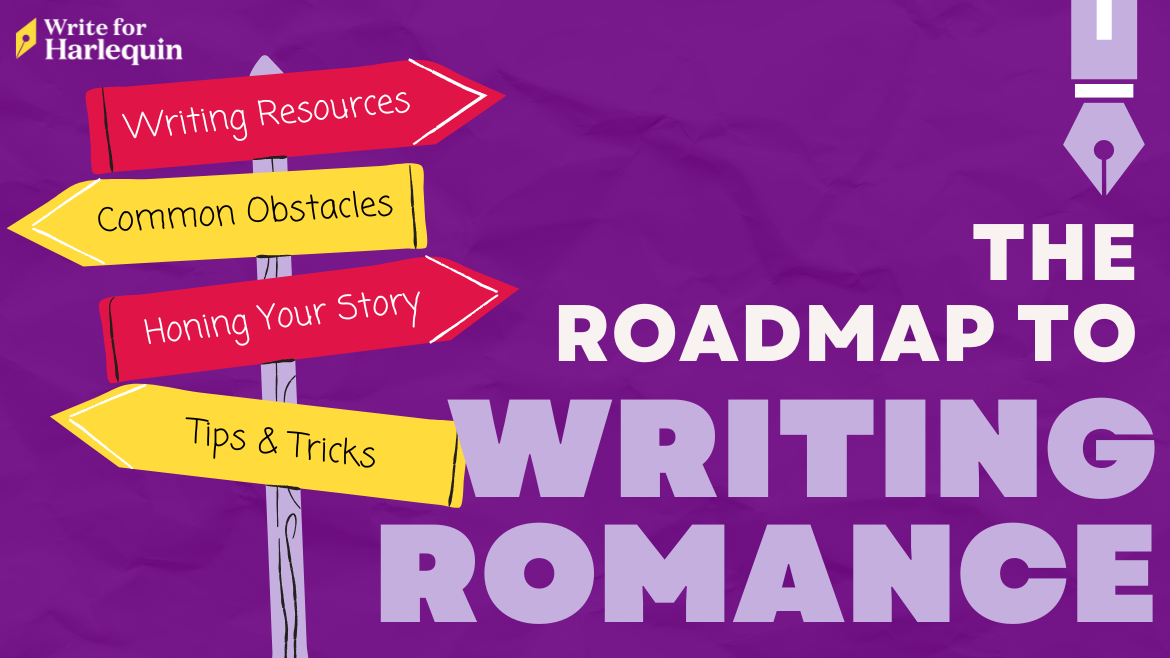
By Emma Cole, Harlequin Intrigue Editor.
Our last post was to help those writers who are plotters, but what about the rest of you? Pantsers are often derided as too impulsive or not focused enough on details, but that’s not necessarily the case! Some of us are just contrarian at heart and making long-term plans for anything is difficult (don’t ever make me write a weekly meal plan). We may like the flexibility of the blank page and worry that too much forethought will make the writing more like work and less enjoyable. What I do know is that when I sit down to write, I want to my time to be as productive as possible, since my day job keeps me pretty busy. Here are my tips for making sure that pantsers like me keep their story moving in the right direction.
If You Can’t Plan the Entire Story, Plan the Moment:
Writing an entire novel requires a commitment, and there are so many moving parts involved that it can take quite a while to figure out an entire storyline. Crafting a very detailed outline can suck the joy out of the project and may make you feel like you’ll be stuck with your first idea instead of your best idea. The good news is that you don’t have to come up with every single character, story beat, and plot twist right away. Instead of trying to plan a whole book, take a couple of minutes at the beginning of your writing session to determine what you’re going to tackle that day. Maybe you want to nail a character’s motivation. Perhaps you have a perfect conversation between your love interests that you want to put on the page. Or you got a flash of inspiration for the perfect chapter ending (or an entire chapter). If you can figure out what it is that you’re hoping to achieve in this writing session, you may be more likely to complete that section without meandering or jumping between ideas.
Get Outside:
I’m a big proponent of writing in my head, and one of the things that really helps me break through writer’s block moments is getting outside and away from my keyboard. Whether you walk, cycle, ride, or even sit in a new place, quiet moments to mull over your current ideas can help push your story. I rewrite paragraphs, tweak the order of story events, or visualize a new character and their story arc while taking in a hike or walking around the block. There’s nothing worse than sitting down at a blank screen and not being sure what your next sentence will be, and switching up your scenery can be a helpful way to focus on the broad strokes of your project without getting hung up on choosing the perfect word. A bestselling author once told me he carries note cards with him wherever he goes, and when a perfect scene or snippet of conversation or interesting detail shows up during his outdoor travels, he stops and writes them down. They might not always be exactly right for the story he’s working on, but more often than not they find their way into a book. If you don’t have note cards, you can always jot down epiphanies in the Notes app on your phone!
Find a Support Group:
You might feel like plotting out your stories is a boring and lonely job because it’s the part that happens before your characters start doing things and interacting with one another. But plotting doesn’t have to be solitary! There are many opportunities both in person and virtually to find writers’ groups that can be both resources and support systems for you as you plan. I’m in a group with some writers who have similar interests and there are often lively discussions about plot twists, character names, how to fix a moment in a story that’s tripping you up, or encouragement when people are submitting short stories or querying agents. Our own Write for Harlequin Community is a great place to start! You might not want to write down in detail every moment of your outline but talking through the process can help you keep track of your storyline and make sure your narrative is engaging to readers.
Write a Zero Draft:
Some of my writer friends swear by the technique of writing a zero draft instead of an outline. They sit down (over multiple sessions) and write out the scaffolding of the story. Whenever they run into a barrier where they aren’t sure about a plot detail and feel stuck, they’ll add a comment in square brackets, like [insert emotional revelation here], and keep going, skipping over all the moments they’re not sure about. This technique means that the finished draft can end up significantly shorter than a first draft—sometimes you’ll only end up with a quarter or a third of your intended word count! But the idea is that you’ll have an easier time coming back to fill in the blanks once you’ve gotten the very basics of the story down from beginning to end. It allows writers who are impatient to know where the story is going to get to the finish line faster, which can help you ensure you’re on the right track before you write in more details.
Read Your Work. Then Reread It. And Read it Again:
I know, sometimes going back to look at what you’ve written feels like a slog. When you want to stay in the moment, it’s easy to push forward and think you know exactly what you wrote, so you’ll definitely keep your story on track. But once that writing session is over, go back and read what you have on the page. You might pick up on a detail that you skated over in the first draft, or realize that you meant to say something differently (or not at all). Maybe your character’s behavior doesn’t quite match up with what you originally thought. That’s totally fine, and it might be a direction you want to explore! But you want to make sure that the change in character feels organic. If not, you may need to tweak earlier sections. Perhaps you got into a groove and use the same word or turn of phrase over and over. Again, that can be fine, and you might want to keep that repetition as a motif. But if you’re not going back to check what you wrote, when you get to the end you may find it takes much more work to edit and refine your manuscript.
***
While these tips definitely won’t turn you into a dedicated plotter, they might help you keep your story on track. Some types of writing require a little more structure than others—I work on our Harlequin Intrigue series, and mysteries can become convoluted if we don’t keep track of all the characters and story elements, and when I write nonfiction (like this blog post!) it’s pretty helpful to have a very basic plan before I get started. Hopefully this advice come in handy for all my fellow pantsers!




